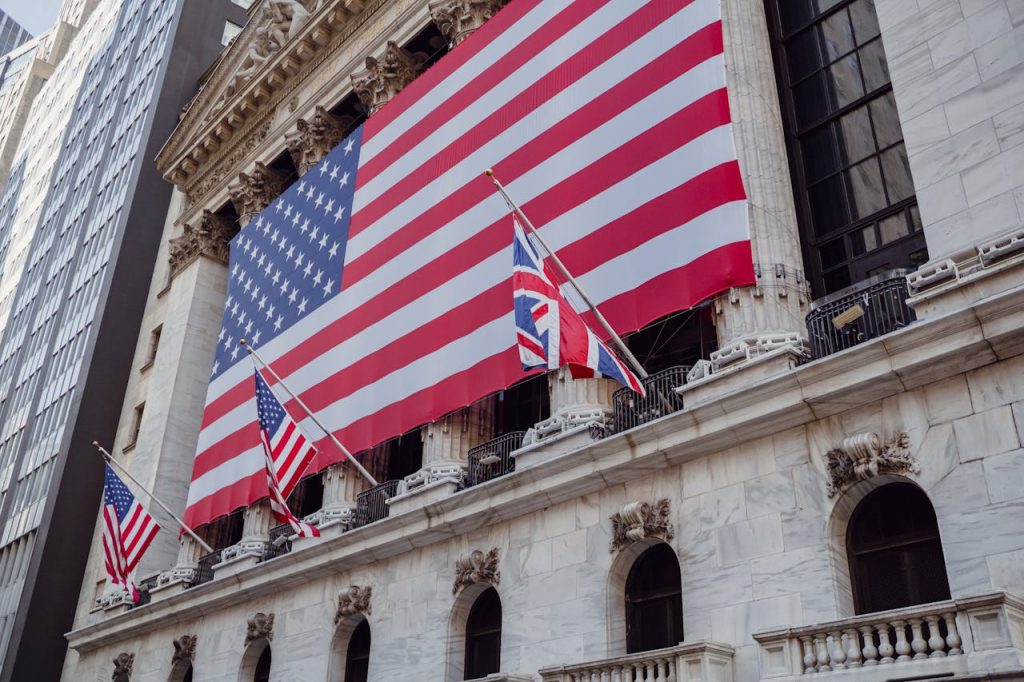Challenge coins have long been a revered tradition within military, government, law enforcement, and other service-oriented communities. These small, custom-made tokens serve as symbols of honor, recognition, and camaraderie. While the design and meaning behind challenge coins are important, the process of awarding them holds equal significance. The ceremony surrounding the presentation of challenge coins adds a layer of gravitas and formality, making the moment memorable for both the giver and the recipient.
In this comprehensive article, we will delve into the ceremonial process of awarding challenge coins, exploring its historical roots, the significance of the ritual, and the various ways in which these ceremonies are conducted. We will also discuss the emotional and psychological impact of receiving a challenge coin, the role of challenge coins in fostering a sense of unity, and how organizations can design and conduct meaningful awarding ceremonies. Whether you are part of the military, a government agency, a corporation, or a non-profit organization, this guide will provide valuable insights into the practice of awarding challenge coins.
The Historical Roots of Challenge Coins
To fully appreciate the ceremonial process of awarding challenge coins, it is important to understand the history and origins of these tokens. Challenge coins have a storied past, with their roots tracing back to military traditions. Over the years, they have evolved into symbols of honor and recognition across various sectors.
The Origins in the Military
The exact origins of challenge coins are somewhat murky, but one popular account dates back to World War I. According to legend, a wealthy lieutenant in the American Expeditionary Forces had custom bronze medallions struck for his unit. These medallions bore the unit’s emblem and were given to each member as a token of camaraderie and loyalty. One story tells of a young pilot who was captured by enemy forces and later escaped to French territory. Without any identification, he was nearly executed by the French, but his life was spared when he presented his challenge coin. This incident is often credited with establishing the tradition of carrying and presenting challenge coins within military units.
Expansion Beyond the Military
As the tradition of challenge coins grew, it spread beyond the military to other branches of government, law enforcement, and eventually into the corporate world. Challenge coins became a way to recognize achievements, commemorate special events, and foster a sense of unity and pride within organizations. Today, challenge coins are used by a wide range of institutions to honor individuals for their service, dedication, and contributions.
The Evolution of the Awarding Ceremony
While the design and use of challenge coins have evolved over time, the process of awarding them has retained its ceremonial significance. The act of presenting a challenge coin is more than just a simple exchange—it is a ritual that conveys respect, gratitude, and recognition. The ceremony surrounding the awarding of a challenge coin adds a layer of formality and solemnity to the occasion, making it a meaningful and memorable experience for all involved.
The Significance of Awarding Challenge Coins
The ceremony of awarding challenge coins carries deep significance, both for the recipient and the organization. It is an opportunity to recognize and honor the achievements, contributions, and service of individuals, while also reinforcing the values and mission of the organization.
1. Recognizing Achievement and Excellence
One of the primary purposes of awarding challenge coins is to recognize achievement and excellence. Whether it’s a military service member who has demonstrated exceptional bravery, a law enforcement officer who has gone above and beyond the call of duty, or a corporate employee who has achieved outstanding results, the presentation of a challenge coin serves as a tangible acknowledgment of their contributions.
The act of awarding a challenge coin publicly reinforces the importance of the achievement and highlights the individual’s role in the success of the organization. It serves as a reminder to others within the organization that excellence is valued and rewarded.
2. Fostering a Sense of Unity and Belonging
Challenge coins play a key role in fostering a sense of unity and belonging within a group or organization. When individuals receive a challenge coin, they become part of a shared tradition that connects them to others who have received the same honor. This sense of belonging is particularly important in environments where teamwork, loyalty, and camaraderie are essential, such as the military, law enforcement, or emergency services.
The ceremony of awarding challenge coins reinforces this sense of unity by bringing individuals together to celebrate their collective achievements and shared values. It serves as a reminder that they are part of something larger than themselves and that their contributions are integral to the success of the group.
3. Reinforcing Organizational Values and Culture
The process of awarding challenge coins is also an opportunity to reinforce the values and culture of the organization. The design of the coin itself often reflects the core principles, mission, and identity of the organization, while the ceremony serves as a platform to communicate and celebrate these values.
For example, a military unit might award challenge coins to recognize acts of courage, loyalty, and sacrifice—values that are central to the unit’s identity. Similarly, a corporation might present challenge coins to employees who embody the company’s commitment to innovation, integrity, or customer service.
By awarding challenge coins in a ceremonial context, organizations can reinforce the behaviors and attitudes they wish to cultivate among their members, creating a culture of excellence, accountability, and pride.
4. Creating Lasting Memories and Emotional Impact
The ceremony of awarding a challenge coin is often an emotional and memorable experience for both the recipient and the presenter. The formal nature of the ceremony, combined with the personal significance of the coin, creates a powerful moment of recognition that resonates long after the event is over.
For the recipient, receiving a challenge coin in a ceremonial context can be a deeply affirming experience. It is a public acknowledgment of their hard work, dedication, and contributions, and it serves as a tangible reminder of their accomplishments. The emotional impact of the ceremony can enhance the recipient’s sense of pride, motivation, and commitment to the organization.
5. Honoring Tradition and Heritage
The tradition of awarding challenge coins is steeped in history and heritage, particularly within the military and other service-oriented organizations. The ceremony of awarding a challenge coin is a way to honor and continue this tradition, connecting the present with the past.
By participating in the ritual of awarding challenge coins, individuals and organizations pay homage to the legacy of those who have come before them. It is a way to honor the traditions, values, and history that have shaped the organization, while also creating new memories and milestones for future generations.
The Ceremonial Process of Awarding Challenge Coins
The process of awarding challenge coins is a ceremonial event that can vary in formality and structure depending on the organization and the context. However, there are several common elements that are typically included in the ceremony, each of which contributes to the significance and impact of the event.
1. Setting the Stage for the Ceremony
The setting of the ceremony plays a crucial role in establishing the tone and significance of the event. Whether the ceremony is held in a formal venue, such as a military base, conference room, or auditorium, or in a more informal setting, such as a team meeting or company event, it is important to create an atmosphere that conveys respect and recognition.
Choosing the Venue
The choice of venue should reflect the importance of the occasion and provide a suitable backdrop for the ceremony. For military or law enforcement ceremonies, the venue might be a parade ground, headquarters, or training facility. For corporate ceremonies, a boardroom, auditorium, or event space might be appropriate. The venue should be large enough to accommodate all participants and guests while allowing for a clear view of the proceedings.
Preparing the Space
The space should be prepared in advance to create a formal and respectful environment. This might include arranging seating for participants and guests, setting up a podium or stage for the presenter, and displaying the organization’s flags, banners, or other symbols. Attention to detail in the preparation of the space helps to convey the significance of the ceremony and ensures that it is conducted in a dignified manner.
2. Introducing the Purpose and Significance of the Ceremony
The ceremony typically begins with an introduction that explains the purpose and significance of the event. This introduction may be delivered by a senior leader, officer, or other respected figure within the organization. The introduction sets the tone for the ceremony and provides context for the awarding of the challenge coin.
Acknowledging the Occasion
The introduction should acknowledge the specific occasion or achievement that is being recognized. For example, the presenter might explain that the ceremony is being held to honor individuals who have demonstrated exceptional bravery, completed a significant project, or reached a milestone in their service or career. This helps to frame the event and emphasizes the importance of the recognition.
Highlighting the Tradition of Challenge Coins
The introduction may also include a brief explanation of the tradition and history of challenge coins, particularly if the ceremony is being held for an audience that may not be familiar with the practice. This explanation helps to reinforce the significance of the challenge coin and its role in the organization’s culture and heritage.
3. The Presentation of the Challenge Coin
The presentation of the challenge coin is the focal point of the ceremony, and it is often conducted with a specific ritual or protocol that adds to the formality and significance of the event.
The Handshake and Coin Transfer
One of the most common rituals in the presentation of a challenge coin is the handshake and coin transfer. In this ritual, the presenter holds the challenge coin in the palm of their hand, concealed from view. As they shake hands with the recipient, the presenter transfers the coin into the recipient’s hand. This discreet transfer adds an element of surprise and symbolism to the presentation, emphasizing the personal nature of the recognition.
The handshake is a gesture of respect and camaraderie, and the coin transfer symbolizes the passing of honor and recognition from one individual to another. This ritual is particularly common in military and law enforcement ceremonies but can be adapted for use in other contexts as well.
Public Acknowledgment and Applause
Following the coin transfer, the recipient is typically publicly acknowledged by the presenter, and the audience may be invited to applaud or offer congratulations. This public acknowledgment reinforces the significance of the achievement and allows others to share in the celebration.
The presenter may also take this opportunity to offer a few words of praise or encouragement, highlighting the recipient’s contributions and the impact of their work on the organization.
4. Concluding the Ceremony
The ceremony concludes with a formal closing, which may include remarks from the presenter or other senior leaders, a reflection on the significance of the event, and an expression of gratitude to all participants and guests.
Closing Remarks
The closing remarks should reinforce the key messages of the ceremony, such as the importance of recognizing achievement, the value of teamwork and camaraderie, and the significance of the challenge coin tradition. The presenter may also take this opportunity to express their pride in the organization and its members, and to encourage continued excellence and dedication.
Group Photo or Commemorative Event
In some cases, the ceremony may conclude with a group photo or commemorative event, such as a reception or luncheon. This provides an opportunity for participants and guests to socialize, celebrate the occasion, and create lasting memories. A group photo, in particular, serves as a visual reminder of the event and the individuals who were honored.
Designing and Personalizing Challenge Coins for Awarding Ceremonies
The design of the challenge coin is a critical aspect of the awarding ceremony, as it reflects the values, identity, and achievements of the organization and its members. When designing challenge coins for awarding ceremonies, it’s important to consider several key features that will enhance the significance and impact of the coin.
1. Reflecting the Organization’s Identity
The challenge coin should reflect the identity of the organization, including its mission, values, and heritage. This can be achieved through the use of symbols, emblems, colors, and text that are meaningful to the organization and its members.
Emblems and Logos
The organization’s emblem or logo should be prominently featured on the challenge coin, serving as a central element of the design. This emblem symbolizes the organization’s identity and mission and reinforces the connection between the coin and the organization’s values.
Colors and Symbols
The colors and symbols used in the design should align with the organization’s branding and identity. For example, a police department might use blue and gold colors, along with symbols such as a badge or eagle. A fire department might use red and black colors, along with symbols such as a Maltese Cross or a fire helmet.
2. Commemorating Specific Achievements
The challenge coin should commemorate the specific achievement or occasion being recognized. This can be done through the use of text, dates, and imagery that highlight the significance of the event.
Text and Inscriptions
The challenge coin should include text that identifies the achievement being recognized, such as “For Bravery in the Line of Duty,” “In Recognition of 20 Years of Service,” or “For Excellence in Leadership.” This text adds context and meaning to the coin, making it a personalized and memorable token of recognition.
Dates and Milestones
Including dates and milestones on the challenge coin helps to commemorate the specific event or achievement being recognized. For example, a coin awarded for a work anniversary might include the years of service, while a coin awarded for a specific project might include the completion date.
3. Incorporating Personalization and Customization
Personalization and customization are key features that make a challenge coin more meaningful and impactful for its recipient.
Individual Names and Ranks
Including the individual’s name and rank on the challenge coin adds a personal touch and makes the coin a unique and cherished keepsake. This level of personalization demonstrates that the coin was created specifically for the recipient and honors their individual contributions.
Custom Shapes and Designs
Custom shapes and designs can make the challenge coin more distinctive and memorable. For example, a challenge coin designed for a specific unit might take the shape of the unit’s emblem or mascot. Custom designs add visual interest and help the coin stand out from more traditional designs.
4. Adding Functional Features
While challenge coins are primarily commemorative items, they can also be designed with functional features that add practicality and versatility to their use.
Bottle Openers
Challenge coins can be designed with built-in bottle openers, making them practical tools that recipients can use in their daily lives. This functional feature adds value to the coin and makes it more likely to be carried and used regularly.
Keychains and Wearable Coins
Challenge coins can also be designed as keychains or wearable items, such as lapel pins or pendants. These wearable coins allow recipients to display their achievements and affiliations in a visible and accessible way, promoting unit pride and camaraderie.
5. Creating Limited Edition and Collectible Coins
Limited edition and collectible challenge coins add an element of exclusivity and prestige to the awarding ceremony.
Limited Edition Releases
Limited edition challenge coins are produced in a specific quantity and individually numbered, making them highly sought after by collectors and recipients alike. These coins are often created to commemorate significant events or milestones, such as a unit anniversary, major achievement, or special project.
Collectible Series
Collectible challenge coins can be produced as part of a series, with each coin representing a different aspect of the organization’s mission or history. Recipients can collect the entire series over time, adding to the significance and value of the coins.
The Psychological and Emotional Impact of Awarding Challenge Coins
The process of awarding challenge coins has a profound psychological and emotional impact on both the recipient and the presenter. Understanding this impact can help organizations create more meaningful and effective awarding ceremonies.
1. The Power of Public Recognition
Public recognition is a powerful motivator, and the act of awarding a challenge coin in a ceremonial context amplifies this effect. When individuals are recognized in front of their peers, they experience a sense of pride, validation, and accomplishment. This public acknowledgment reinforces their self-worth and motivates them to continue striving for excellence.
2. Creating Lasting Memories
The ceremonial process of awarding a challenge coin creates a lasting memory for the recipient. The formal nature of the ceremony, combined with the personal significance of the coin, makes the moment stand out in the recipient’s mind. This memory serves as a reminder of their achievements and contributions, providing a source of motivation and inspiration in the future.
3. Reinforcing Organizational Loyalty
The process of awarding challenge coins reinforces the recipient’s loyalty to the organization. The recognition and validation they receive through the ceremony strengthen their emotional connection to the organization and its mission. This sense of loyalty can lead to increased job satisfaction, commitment, and retention.
The Enduring Significance of Awarding Challenge Coins
Awarding challenge coins is a time-honored tradition that carries deep significance in the military, government, law enforcement, and corporate sectors. The ceremonial process of presenting a challenge coin adds layers of meaning, emotion, and formality to the act of recognition, making it a memorable and impactful experience for all involved.
By carefully designing and conducting awarding ceremonies, organizations can use challenge coins to recognize achievement, foster unity, reinforce values, and create lasting memories. Whether honoring bravery in the line of duty, celebrating milestones, or recognizing excellence in the workplace, challenge coins serve as tangible symbols of the values and traditions that define an organization.
As organizations continue to seek meaningful ways to recognize and honor their members, the tradition of awarding challenge coins remains a powerful and enduring practice. By embracing this tradition and adapting it to the modern context, organizations can create a culture of recognition, pride, and excellence that inspires and motivates their members for years to come.
If you are interested in a unique challenge coin, you can call us at 800-371-6256 or fill out a FREE quote form.








